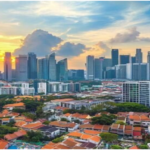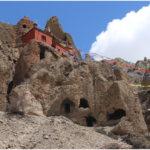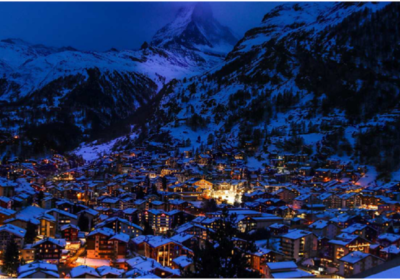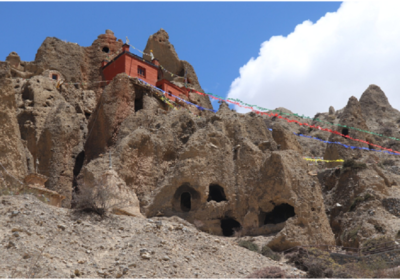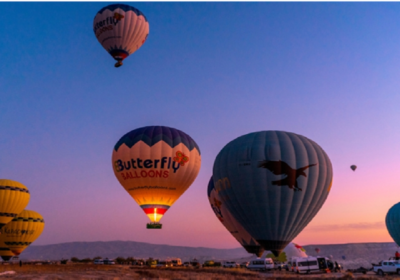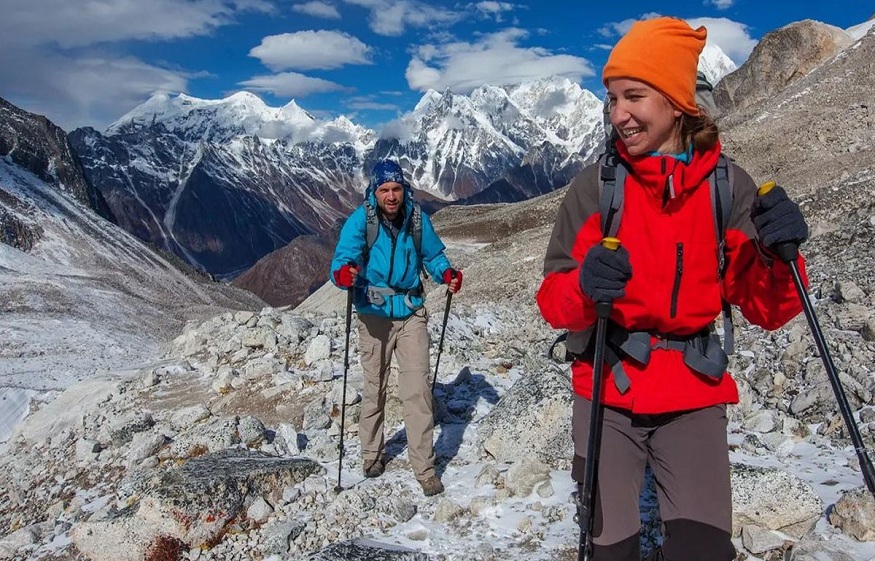
The Truth About Trekking The Manaslu Circuit: Beauty, Challenges, And Culture
Trekking the Manaslu Circuit is not just a physical and mental journey through the Himalayas, it’s an odyssey that combines stunning vistas of isolated Nepalese communities with an intimate immersion in an ancient culture and moments of triumph and personal fulfillment. As far off the beaten tracks as you can get from Everest and Annapurna, the Manaslu Circuit is a raw experience of a side of Nepal still untouched by mass tourism. Circling the world’s eighth-highest mountain, this trail is jammed with scenic drama, from the greenest of green valleys and roaring rivers to glacial moraines and the looming presence of Mount Manaslu itself.
Short Manaslu Circuit Trek. The beauty here is untamed and various. The landscape changes with every day, as you ascend. One minute you’re strolling through thick woodlands in the company of rhododendron and pine, and the next you’re in the company of desolate alpine scenery and snow-kissed summits. It culminates physically at Larke Pass, a tough, high-altitude pass that demands endurance, but offers one of the most breathtaking vistas in the Himalaya.
The path winds its way through a series of Tibetan-influenced villages, bordered by ancient monasteries, mani walls, and prayer flags. The rhythm of life here is one that has not altered for centuries. Trekkers are treated with sincere warmth, and those who venture a little off the beaten path will discover the generosity and openness of iwi (tribe) and Māori communities.
Yet this hike requires planning. The remoteness, the altitude, the long walking days — it’s flat out challenging, particularly for newbies. But those who accept the challenge bring back more than photographs—they bring stories of silence, strength, and the spirit of the mountains. The Manaslu Circuit is not a trek for all, but for those in search of a more authentic Himalayan experience, it is one of the loveliest, realist, and most unforgettable hikes in Nepal.
When people think of hiking in the Himalayas, the mind often leaps to legendary routes such as Everest Base Camp and the Annapurna Circuit, but buried deep in north-central Nepal, there’s a hidden gem — the Manaslu Circuit. This journey includes everything a bold spirit could wish for — towering mountains, few other trekkers, ancient cultures, and that elusive sense of discovery in a world where it is hard to lose yourself on more crowded trails. The circuit loops around the world’s eighth-highest peak, Mount Manaslu (8,163 meters), taking you from lush green hills to high alpine passes and offering a trekking experience that you won’t soon forget.
The Manaslu Circuit is about more than just natural beauty; it’s about transformation. It’s the kind of trek that takes a toll on your body and lifts your spirit. When you have fewer trekkers on the trail, there’s an intimacy and sense of purity to the experience that enables you to connect fully with nature, local people, and yourself.
Manaslu Circuit Trek In the next article, you’ll get an even closer look at what it means to circumnavigate Manaslu—from those early indelible impressions, the overwhelming geography and geology, the people and culture that inhabit these hills, and the sweaty determination that makes this a challenge to brag about once you are back home. Whether you’re considering your next epic Himalayan trek or want to learn about this gem in the rough, this guide should give you a good sense of what makes the Manaslu Circuit great.
Manaslu Circuit First Impressions
Stepping onto the Manaslu Circuit trail for the first time was like entering a secret world. It’s not like the more popular treks in Nepal, where the tourist hordes are evident from the get-go. The trek starts in the subtropical lowland around Soti Khola, surrounded by humid air, rice fields on terraces, and thick forests. Bridges are swung high above rushing bodies of water, and precipitous paths grip the side of the cliffs, reminders that this trip won’t be easy but surely will be worth it.
And what struck me most in the early days was how real this area was. There were no throngs, no internet cafés, no overpriced bakeries. The people were friendly but not overly friendly, the kind of folks you learn to admire rather than just stop by. Children of the village: shy smiles ready to meet and greet – there was nothing artificial here.
The vistas began to open up as the path slowly rose higher—far-off snow-capped peaks taunted the horizon, teasing of what was ahead. And every step of the way, there was a sense of anticipation that something special was still out there.
These initial impressions would prove to be a microcosm for the whole trek: raw, unmediated, and with minimal ego-extension. The Manaslu Circuit felt like a path of pilgrims, with each village, mountain, and footstep bearing a story that had yet to reveal itself.
Natural Beauty / Scenic Highlights
The Manaslu Circuit Trek is a natural beauty masterpiece. Every day on the path ushers in new, dramatic landscapes — from tumbling cascades and green woodlands to glaciers and high alpine meadows, and the looming, frosted peaks of the Himalaya. What is inspiring about it is the variety of landscapes and how they look as you go up.
Further below, you hike through thick jungles of ferns and bamboo and hear the roar of the Budhi Gandaki River. The trail snakes through narrow canyons and over high suspension bridges; the jungle-y trekking experience makes you feel like you’re anywhere other than the Himalayas. Up past the forests, the landscape opens into rolling hills and terraced fields, and the locals farm buckwheat and potatoes amid a backdrop of majestic mountains.
Further up, near Samagaon and Samdo, the landscape becomes more dramatic. Snowcapped peaks such as Manaslu, Himlung Himal, and Ganesh Himal rise above the trail. Glaciers dangle from cliffs, and frozen rivers meander through valleys. Birendra Lake’s turquoise water and reflections of Mount Manaslu on its calm surface will be something not to forget.
High crossing over Larke Pass (5,106 metres) is the crème de la crème — at the top, you are awed by the 360-degree mountainous magnificence of nature. The descent into Annapurna brings a different kind of beauty: peaceful forests, crimson rhododendrons when in season, and, of course, dramatic valleys.
At every step, the Manaslu Circuit overwhelms you with awe and makes you believe this is one of the Himalayas’ most scenic treks.
Culture and Tradition Engagement
Manaslu Circuit Trek Nepal. One of the most rewarding things about the Manaslu Circuit Trek is its pure discovery of the traditional Himalayan lifestyle. Common Trails that have been trampled with modernization on other trekking trails are still fledgling in the Manaslu region that harbors ancestral traditions, spirituality , and abundant ethnicity at its core. Whilst journeying through secluded villages, you meet local communities that have held on to traditions and customs for centuries.
The trek starts at Gurung villages, where rice terraces and stone houses depict rural Nepal. As you climb, the cultural hue changes more toward Tibetan Buddhism, especially in places such as Lho, Samagaon, and Samdo. Here, there are monasteries laden with prayer flags, whirling mani wheels, and intricately carved chortens. Day-to-day life is dominated by religious festivals, yak herding, and agriculture.
Connecting with the locals — down-to-earth, tough, and welcoming — enriches the travel experience. You’ll sip tea with monks, observe praying rituals, and listen to mantras reverberate through the mountains. There’s a sacredness to these villages where religion and the act of staying alive are inseparable.
The cultural experience is more than just observation. By sleeping in small teahouses and traveling with Sherpa guides, or local residents, you join the beat of life in these remote high-Himalayan communities. It’s an opportunity not just to observe a different world but to engage with it respectfully and thoughtfully.
Hiking the Manaslu Circuit is as much a cultural odyssey as a physical challenge, an expedition through terrains created by nature and millennia-old custom.
Physical Requirements and Challenges of the Trek
The Manaslu Circuit Trek is a rugged adventure suitable for those used to long days on the trail and its ultimately high-altitude terrain. It’s rated as a moderate to strenuous hike — one that demands both physical fitness and mental toughness. No matter the route does not require any technical climbing skills, but the distance, elevation gain, and trail conditions are a real tough grind.
The 110-mile trek takes 14 to 18 days, and trekkers walk for 6-8 hours daily on average. The route involves steep climbs and descents, narrow rocky trails, and some areas that are prone to landslides or covered with snow. CROSSING the Larke Pass (5,106 meters) is the toughest day, usually starting before dawn, with icy winds and a long, steep descent.
The other major challenge is the altitude factor. As the trek gets higher, the oxygen level falls, and your body must acclimatize to the thinner air. Good acclimatization is also the key to avoiding altitude sickness, so most itineraries have rest days built in at altitude, such as Samagaon and Samdo.
Mental toughness is as crucial. The weather can be erratic, and creature comforts are scarce — hot showers, electricity, and internet are luxuries, not certainties.
That being said, with a bit of effort, time, and an experienced guide, the hike is quite feasible for most people in good health. And the reward? Complete exhaustion, unreal scenery, and memories that have been achieved through sweat, determination, and breathtaking beauty.
Problems of Altitude and Acclimatization
Manaslu Circuit Trek Cost And Itinerary A key feature of the Manaslu Circuit Trek is the rapid gain in altitude that provides stunning views but also presents serious acclimatization hurdles. Beginning wide (7,700 feet) salient climes towards the highest point, which is the Larke Pass of 17,100 feet. The high degree of altitude gain in a relatively short distance makes it imperative that trekkers move slowly and consciously, to acclimate to the thin air and avoid Acute Mountain Sickness (AMS). Rest days are important to help with acclimatization, and we generally spend time in Samagaon and Samdo, both nodes off the main trail, to help the body adjust to the thinner air.
The hike is not only a test of your physical stamina, but also your capacity to not panic and to listen to your body. Even fit trekkers can start to experience symptoms like headaches, fatigue, and shortness of breath. The key to avoiding altitude sickness is staying hydrated, eating properly, and not drinking alcohol, as well as taking your guide’s advice. What helps to make acclimatization easier on this route is the peacefulness of the villages, the relaxed pace of local life, and the jaw-dropping natural beauty that envelops you on rest days.
Those who respect the altitude and come at it smartly frequently find their bodies adjust perfectly well. The look has its rewards, and even tho the trip is slower if considering the vehicle, it’s safer and in the end it’s better. But up there, you feel fuller in both the literal and emotional sense, it’s one of the most transcendent sections of the Manaslu circuit.
Chinh Chu Jeneček: Trail Conditions & Daily Distances
The Manaslu Circuit presents a variety of trails including subtropical forest, alpine meadows, rocky ridges, and snow-clad passes. And each day is a new landscape, and new physical demands. Walks are often 6 to 8 hours on foot, covering 10 to 20 kilometers per day, depending on terrain, weather, and altitude. The path can be steep and narrow in sections, especially near Larke Pass, where snow and wind only add to the challenge.
Unlike the well-trodden trails of the Everest and Annapurna regions, the Manaslu trail is not as well developed, adding an edge of wildness but also a degree of difficulty. You’ll traverse suspension bridges over churning rivers, climb rock steps, and even, at times, scramble over loose scree. Monsoon downpours or early winter snow can change the trail’s status, rendering it slippery or temporarily clogged with debris, so selecting the best time of year — spring or autumn — is crucial for the trail.
With that being said, the daily routine of walking is meditative. You set a rhythm and follow the river, ascending through pine forests or strolling in the shadow of snow-capped peaks. There are frequent breaks at tiny teahouses or rest stops offering incredible views. Although the trail is surely strenuous, and you will need to be sure-footed, the path is not technical, which means — in addition to proper preparation and a solid guide — even first-timers to high-altitude trekking can rise to the challenge.
Duh Called Teahouse Life and Local Hospitality
Life in the isolated teahouses along the trail is one of the most vivid memories of the Manaslu Circuit Trek. But in contrast to more frequented trekking areas, where lodges can feel commercialized, teahouses here are modest, family-run operations that provide an authentic look at rural Himalayan life. Accommodations are modest (just wooden beds, thick quilts, shared bathrooms) but give so much more in looks, warmth, and all-around charm that fancy frills are forgotten in an instant.
At each stop along the trail, there are potential encounters with Tibetan-influenced mountain communities that have resided there for generations. Food, meanwhile, is home-cooked and hearty, frequently consisting of dal bhat, noodles, momos, and/or tsampa—grist for the mill of a long day’s trekking. The kitchens of the teahouses become the living rooms of the trek, intimate refuges from far and wide, swapping tales, advice, and laughter around the fire.
There is no service here, only hospitality, which is why guests on this journey come not only to eat well and experience the outdoors, but also to party with the people behind the scenes. Despite the solitude and frugality, the generosity of the hosts can change the perception for a lifetime. From keeping a pot of hot tea brewing after a snowy day to going out of their way to help you heal from altitude fatigue, it’s their human kindness that adds the most to the trek.
Manaslu Circuit Trek Map Life in the teahouses is the small corner of the Manaslu Circuit where the hike becomes more than a trek — it’s a cultural journey. In these dark, smoky kitchens and quiet mountain lodges is where many trekkers find the heart of the Himalayas beats strongest.
Struggles and Triumphs in Brief
Every trekker experiences the partial blowing of their capacities during the Manaslu Circuit, of their physical, mental, and emotional threshold. Whether it’s the slow ascent up steep, shifting-rock trails, the altitude headaches, or the tired miles grinding into frigid wind near the Larke Pass, there are times when the journey seems insurmountable. These challenges are very real and often unexpected for even experienced hikers. And small problems can feel bigger and every step more planned, particularly when dealing with the altitude, the terrain, or the distance from all civilization.
But it’s precisely in these challenging times that the alchemy of the trek sometimes emerges. It’s pure triumph to be slogging through a hard day, and then suddenly your feet are clicking through onto a windswept ridge with jaw-dropping, soul-elevating views. And crossing Larke Pass after a slow, freezing pre-dawn climb isn’t just a physical accomplishment — it’s a profoundly personal one. You start to find reservoirs of strength and resilience you didn’t know you possessed.
And then there are the quiet times — sunrise over Manaslu, shared laughter with a porter over tea, the musical clatter of prayer flags flapping in the wind at a cliffside monastery. These little, quiet victories have just as much emotional heft as the physical.
The Manaslu Circuit is a trek that doesn’t reward just with postcard views, but with post-trek courage and a sense of self. Every challenge you push through, you will treasure it in your story corner when you travel on the PCT.
Final Thoughts: Worth It?
Yes, it’s a thousand times worth it, the Manaslu Circuit Trek! It’s no easy haul — long days, high altitude, cobbled-together accommodations, changing weather — but that’s exactly why it’s so powerful. “It’s the one trek in Nepal where mother nature’s harsh grandeur, extreme mountain conditions, and perfect isolation combine to give a real sense of discovery and connection, both to nature and to oneself,” he said.
The isolation never feels lonesome — just peaceful. The absence of tourism crowds means that you can take in the landscape and culture in its most authentic way. The trek to Larke Pass (5160m) is tough but a life-changing experience, and the 360-degree view at the pass is incomprehensible in words or pictures.
The spiritual and cultural depth of the trail, however, is no less lasting than the physical. The warmth and sense of hospitality ensured by the locals, the tranquillity of the mountain folk, and the spiritual energy exerted by the monasteries and chortens en route imbue the trek with an emotional depth that surpasses most other mountain treks.
Manaslu Circuit Treks Nepal For anyone who wants more than a postcard view or a bucket-list experience, the Manaslu Circuit offers something much more, something akin to life itself: a voyage that unsettles, educates, and changes you in ways you didn’t know you needed. It’s not an item to be crossed off the list; it’s a place that makes you feel like every breath is something earned and every moment is something real. So, yes, if you are ready and willing, trekking the Manaslu Circuit isn’t worth it — it might be one of the best things you ever do.
What are some fun facts about Mount Manaslu?
Mt. Manaslu, towering at 8,163 m (26,781 ft) as the eighth highest peak in the world, and one of the most beautiful mountains in Nepal. It gets its name from the Sanskrit word “Manasa,” which translates into “soul” or “spirit”, the relevance of which is the deep spiritual connection locals feel towards the mountain. Referred to as the ‘Mountain of the Spirit’, the mountain is worshiped by the local population, especially Tibetans, who consider it a divine protector of the region.
One interesting fact is that Manaslu was climbed for the first time in 1956 by a Japanese team, making it the first 8,000-meter peak ascended by Japanese mountaineers. As a result, it occupies a unique position in the history of Japanese mountaineering. What is also interesting is that Manaslu has a fraction of the climbers visiting it compared to Everest or even Annapurna, making it a more peaceful and remote experience for trekkers.
The Manaslu region is inhabited by various species of birds, Himalayan tahr, red pandas, and the rare snow leopard. The cultural dimension is no less rich, with many of the villages along the trek marked by Tibetan Buddhism, ancient monasteries, prayer wheels, and mani walls that dot the landscape.
As one of the tallest peaks in the world, Manaslu is also one of the least explored, and that gives it an allure of its own. It’s where nature, spirituality, and adventure converge in their rawest form.
Do you need a guide for the Manaslu Circuit trek?
Yes, it is not just highly advised, but is also a requirement that you hire a licensed guide while trekking the Manaslu Circuit, as the area is classified as a restricted region. Conditions of the Nepalese Government say that you have to be at least two Trekkers (without a guide), and must be organized through a trekking agency, which takes care of permits and logistics.
A guide is more than a law to obey, and they are the conduit to the culture, landscape, and safety of the hike. With their familiarity with the trail, high-altitude first-aid training, and their patience in dealing with the local languages and customs, guides are crucial for both the success and the enjoyment of your trip. On a remote and physically challenging route like Manaslu, where communication networks are few and the terrain rough, a guide offers not just direction but also peace of mind.
Manaslu Circuit Trek Cost Guides also help to organize accommodations and meals, and to navigate social interactions in remote villages where language can be an issue. When you’re trekking with a reputable firm such as Sherpa Expedition & Trekking, guides are all trained professionals and can function as cultural guides, giving you insight into the spiritual and historical history of the region.
But in the end, hiring a guide for the Manaslu Circuit is not only about complying with rules- it’s about improving your experience, staying safe, and experiencing the people and places that make this trek so unique.
How challenging is the Manaslu trek?
The Manaslu Circuit Trek is a moderate to strenuous trek, and if you are an occasional trekker, fitness freak, or someone who can handle the changing altitudes, then this trek is for you. (These are not your strolls in the hills; this is challenging, multi-day trekking through some very rough country, between some very remote villages and, finally, over the high and strenuous Larke Pass (5,160 meters), which is the physical and emotional high point of the entire trek.)
Expect long days hiking—for approximately 6 to 8 hours—over a variety of terrain, from steep inclines and rocky paths, to traversing rivers, and even trekking through high-alpine snow fields. Compounding this difficulty is the speed at which one is gaining altitude, which necessitates a well-timed itinerary with acclimatization days; otherwise, even the most experienced hikers are at risk of acute mountain sickness (AMS), so it’s important to be vigilant, keep hydrated, and rest when necessary.
The inaccessibility of the area also adds to the trek’s difficulty. Unlike at many more commercial trails, amenities here are minimal, and assistance might not be readily available if something goes wrong. On your own: You’re going to have to be fit and mentally tough.
That being said, the Manaslu hike is quite doable if you go well-prepared. With just a little bit of preparation, going with a reputable guide, and being able to play the mental game, you can transform this notoriously difficult trek into one of the most rewarding experiences you’ll ever have.
Is the Manaslu Circuit trek worth it?
The Manaslu Circuit Trek is worth it, especially if you’re looking for a real Himalayan adventure mixed with nature, culture, and wilderness. Quite different from the more commercialized trails such as Everest or Annapurna, Manaslu has a more intimate and unspoiled feel, every step is a find in itself.
Manaslu Circuit Trek Best Time: The views are breathtaking and change dramatically from dense forests and rushing rivers in the lower elevations to barren valleys and snow-capped peaks as you climb higher. The standout is the traverse of Larke Pass, which, in the beauty of the panoramic alpine views, makes the effort worth it. With fewer trekkers on the trail, you can find yourself with whole stretches of trail and viewpoints to yourself, which lends plenty of time for reflection and peace that is difficult to find elsewhere.
There’s as much culture to the trek. The trail passes through several authentic Tibetan-style villages, allowing hikers to see the traditional, quaint way of life, visit the monasteries, view the prayer flags, and the locals’ customs. You’re not just walking through landscapes — you’re walking through living history.
There is, indeed, a physical challenge, and that is something that’s becoming increasingly rare on the Manaslu Circuit. Each hard thing you do has a matching moment of awe or connection that reminds you why you signed up for this. For hikers looking for more than just a check in the box, for those longing for meaning, challenge, and raw beauty, the Manaslu Circuit provides all of that and more.
Is Manaslu harder than Everest?
Manaslu Circuit Trek or Everest Base Camp Trek – which one is better? If we compare with Everest Base Camp Trek with the Manaslu Circuit Trek, the latter is considered to be more physically and mentally challenging. The reasons are its known remoteness, little infrastructure, and the ever-challenging landscapes. Although both hikes take you to high altitude — Everest Base Camp is at 5,364 meters altitude, while Larke Pass on Manaslu is 5,160 meters — the Manaslu trail is less developed, with steeper ascents and descents, fewer amenities, and greater distances between villages.
Unlike Everest, where a helicopter rescue, good lodges with Wi-Fi are available all the way, Manaslu is a wilder adventure. The trail goes through remote valleys where trekkers need to be more self-sufficient and able to adapt. The ascent to the Larke Pass can be snowy and windy, and is often described as one of the more difficult passes to cross in Nepal.
But the challenge of either hike varies with each person. Everest is popular, and that means more trekkers are on the trail, a state of affairs that may provide psychological comfort to anyone feeling unsteady and increase the chance that help will be on hand. Manaslu is more for solitude and tranquility, but it is also harder on fitness, preparedness, and calm nerves.
So, is Manaslu more difficult than Everest? Technically and logistically, yes — but that’s what can make it so rewarding for those drawn to the challenge, authenticity, and immersion into nature and culture. For more experienced trekkers — or those simply looking to kick things up a notch — Manaslu has the perfect mix of challenge and reward.



